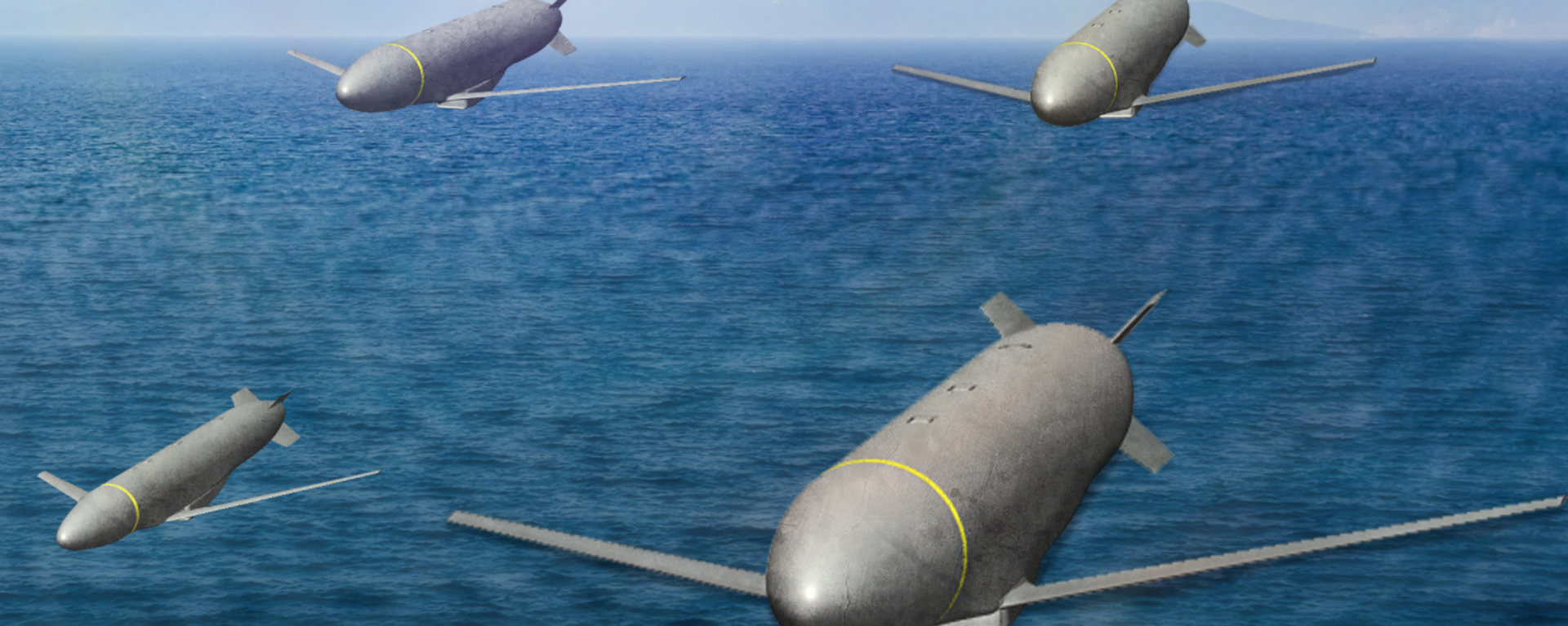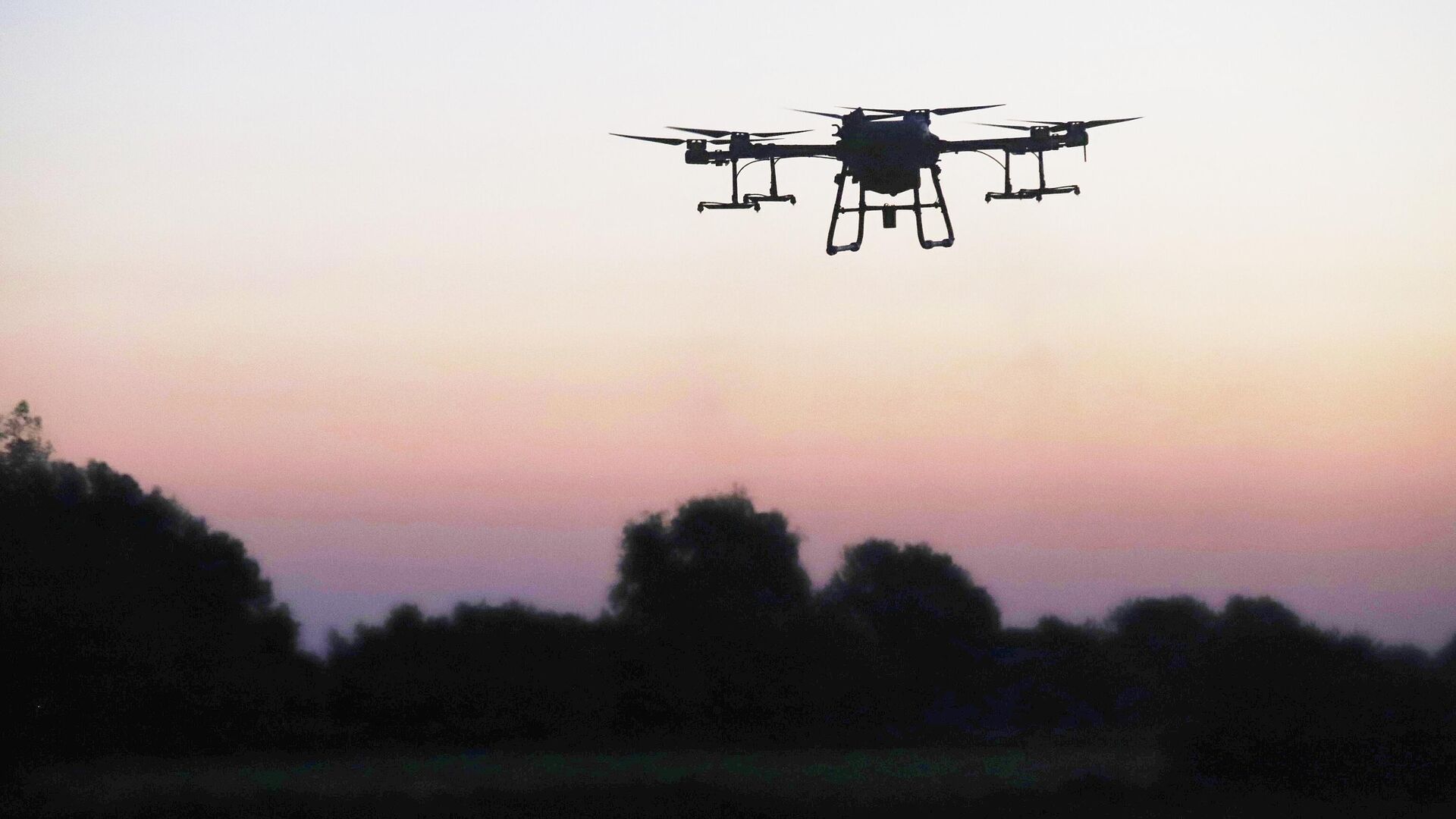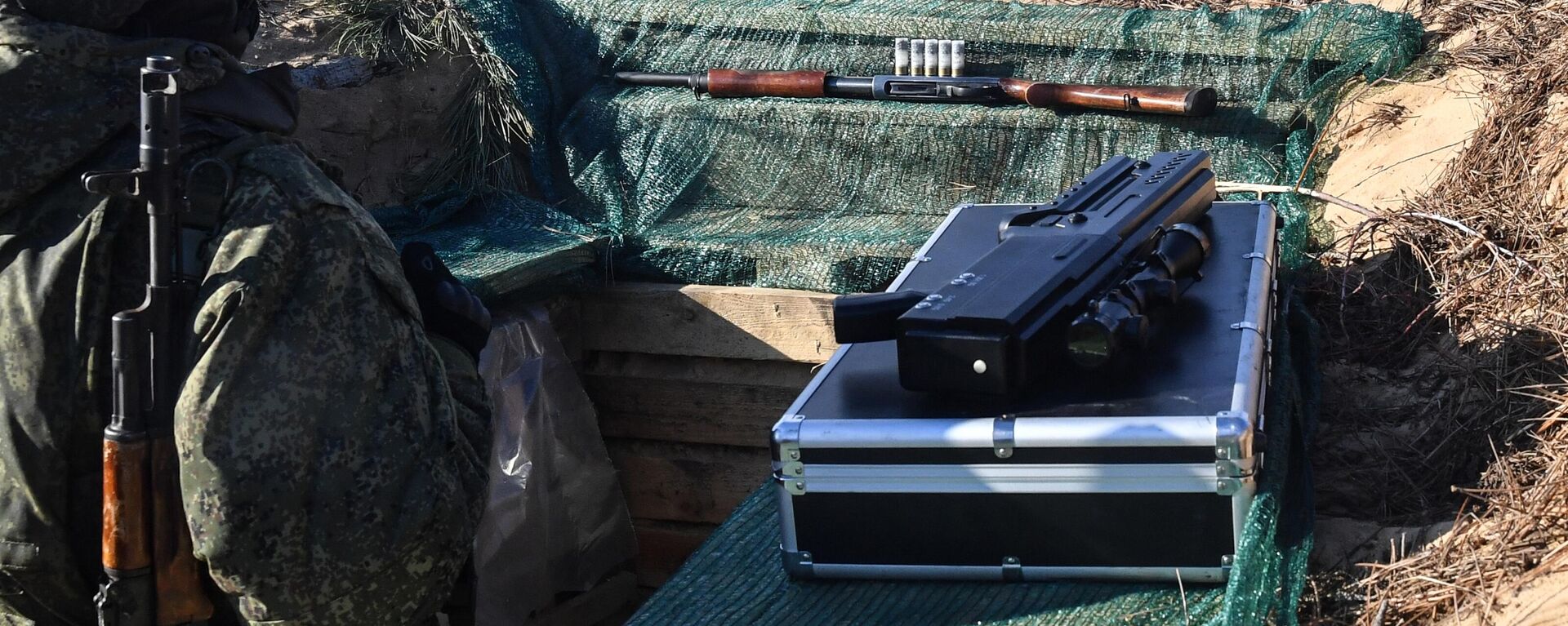https://sputnikglobe.com/20240304/why-us-plan-to-build-hundreds-of-ai-empowered-drones-by-2029-is-big-if-1117131775.html
Why US Plan to Build Hundreds of AI-Empowered Drones by 2029 is Big If
Why US Plan to Build Hundreds of AI-Empowered Drones by 2029 is Big If
Sputnik International
The US Air Force wants to buy at least 1,000 AI-empowered drones to escort F-35 and B-21 warplanes and even attack other aircraft and ground targets, according to the Wall Street Journal.
2024-03-04T18:59+0000
2024-03-04T18:59+0000
2024-03-04T18:59+0000
drones
drone
artificial intelligence (ai)
military
https://cdn1.img.sputnikglobe.com/img/07e8/02/18/1116953537_0:0:3075:1731_1920x0_80_0_0_8f8765931313d9b4dcefdc08e35cb0ee.jpg
The Pentagon has announced a $6 billion program to build a fleet of drones known as Collaborative Combat Aircraft (CCA). By the summer the US Department of Defense is expected to choose two manufacturers to start building the unmanned aerial vehicles (UAVs). US defense contractors Boeing, Lockheed Martin, Northrop Grumman, General Atomics and Anduril Industries have thrown their hats in the ring.The US Air Force wants at least 1,000 CCAs to escort and protect crewed aircraft, including the Lockheed Martin F-35 Lightning II fighter or the prototype Northrop Grumman B-21 Raider bomber, while carrying equipment and weapons to hit aerial and land targets, conduct surveillance and serve as communications hubs.The concept is nothing new, according to Dmitry Drozdenko, a military analyst and chief editor of the Fatherland Arsenal Internet portal. Last October the Marine Corps conducted a test flight of the Kratos XQ-58A Valkyrie UAV at Eglin Air Force Base, Florida. The tests were made to evaluate the potential of using artificial intelligence-enabled platforms to enhance manned-unmanned teaming capabilities."That drone, Valkyrie, is actually an unmanned wingman. Russian designers demonstrated a similar drone, called the Grom [Thunder]. These drones fly accompanying a modern [manned] aircraft, for example, a fighter, and perform the most risky tasks," said Drozdenko. "Their task is to come forward, draw fire upon themselves, confuse air defense forces, fight with them; and then the manned group arrives and completes the task."Russia's Grom UAVThe Grom UAV was first shown at the Russian International Military-Technical Forum "Army" in 2020. The drone was developed by the Kronstadt Group to operate alongside Russian fighter jets, including the Sukhoi Su-35 and Su-57.The main task of the UAV is to protect the manned aircraft. It was announced that the Grom would be capable of carrying various weapons systems including KAB-500S guided aerial bombs and Kh-38 air-to-surface guided missiles. The AI-empowered drone will be able to work not only with manned aircraft, but also completely autonomously. It will also be able to control a swarm of 10 Molniya [Lightning] reusable high-speed drones.US Faces Problems With AI-Empowered DronesStill, US designers have faced unexpected setbacks while "teaching" the AI-empowered uncrewed fighters to fly autonomously and adapt to changing conditions in combat, according to the expert.Last June, Colonel Tucker Hamilton described a test in which an AI-drone decided to "kill" its operator to stop him from what the UAV perceived as interfering with its efforts to accomplish the task.The incident prompted a heated debate while the US Air Force rushed to assure the media that "this was a hypothetical thought experiment, not a simulation." Hamilton also claimed that he "misspoke" during his speech at the summit.Drozdenko believes that the story smells fishy, and does not rule out that the simulation was real.Will the US Air Force Get Its Collaborative Combat Aircraft in Time?The WSJ has admitted that the US Air Force is facing a number of challenges in the way of getting its CCAs. Only one of the five contenders – Boeing's MQ-28 Ghost Bat – has flown publicly, while others have either kept their jets under wraps or released only photos of the aerial vehicles.The USAF has budgeted between $20 million and $30 million for each UAV, and plans to have hundreds flying by 2029. But the Pentagon has a long record of late and over-budget programs, the newspaper noted. The average Pentagon program takes seven years from contract award until service entry, while the USAF wants the CCA program completed in five years.The contractors still have problems related to their previous projects and contracts: "Boeing's military-aircraft programs are struggling; Lockheed Martin has dozens of F-35s parked that the Pentagon refuses to accept until software fixes are completed; and Northrop Grumman has faced challenges on some programs," the newspaper pointed out.According to the Russian expert, the US military industrial complex is wasteful and corrupt, while its programs are deeply politicized, leaving the future of US ambitious AI drone program uncertain.
https://sputnikglobe.com/20230815/why-us-drones-prove-useless-in-ukraine-1112615946.html
https://sputnikglobe.com/20230529/what-are-anti-drone-systems-and-how-do-they-work-1110774045.html
Sputnik International
feedback@sputniknews.com
+74956456601
MIA „Rossiya Segodnya“
2024
News
en_EN
Sputnik International
feedback@sputniknews.com
+74956456601
MIA „Rossiya Segodnya“
Sputnik International
feedback@sputniknews.com
+74956456601
MIA „Rossiya Segodnya“
drones manufacturing, new military drones on the market, drone warfare, what drones does us have, what do military drones do, military drones in action, what drones does russia have, drones on a battlefield
drones manufacturing, new military drones on the market, drone warfare, what drones does us have, what do military drones do, military drones in action, what drones does russia have, drones on a battlefield
Why US Plan to Build Hundreds of AI-Empowered Drones by 2029 is Big If
The US Air Force wants to buy at least 1,000 AI-empowered drones to escort F-35 and B-21 warplanes and even attack other aircraft and ground targets, according to the Wall Street Journal.
The Pentagon has announced a $6 billion program to build a fleet of drones known as Collaborative Combat Aircraft (CCA).
By the summer the US Department of Defense is expected to choose two manufacturers to start building the unmanned aerial vehicles (UAVs).
US defense contractors Boeing, Lockheed Martin, Northrop Grumman, General Atomics and Anduril Industries have thrown their hats in the ring.
The US Air Force wants at least 1,000 CCAs to escort and protect crewed aircraft, including the Lockheed Martin F-35 Lightning II fighter or the prototype Northrop Grumman B-21 Raider bomber, while carrying equipment and weapons to hit aerial and land targets,
conduct surveillance and serve as communications hubs.

15 August 2023, 15:03 GMT
The concept is nothing new, according to Dmitry Drozdenko, a military analyst and chief editor of the Fatherland Arsenal Internet portal. Last October the Marine Corps conducted a test flight of the Kratos XQ-58A Valkyrie UAV at Eglin Air Force Base, Florida. The tests were made to evaluate the potential of using artificial intelligence-enabled platforms to enhance manned-unmanned teaming capabilities.
"That drone, Valkyrie, is actually an unmanned wingman. Russian designers demonstrated a similar drone, called the Grom [Thunder]. These drones fly accompanying a modern [manned] aircraft, for example, a fighter, and perform the most risky tasks," said Drozdenko. "Their task is to come forward, draw fire upon themselves, confuse air defense forces, fight with them; and then the manned group arrives and completes the task."
The Grom UAV was first shown at the Russian International Military-Technical Forum "Army" in 2020. The drone was developed by the Kronstadt Group to operate alongside Russian fighter jets, including the Sukhoi Su-35 and Su-57.
The main task of the UAV is to protect the manned aircraft. It was announced that the Grom would be capable of carrying various weapons systems including KAB-500S guided aerial bombs and Kh-38 air-to-surface guided missiles. The AI-empowered drone will be able to work not only with manned aircraft, but also completely autonomously. It will also be able to control a swarm of 10 Molniya [Lightning] reusable high-speed drones.
The drone's take-off weight is up to 7 tons with a length of about 14 meters and a wingspan of up to 10 meters. Its flight range is believed to be about 1,400-2,000 kilometers, while its maximum flight altitude is up to 12,000 meters. The Grom is powered by an AI-222-25 turbojet engine, similar to one used by the Yak-130 advanced trainer aircraft. According to open sources, work on the Grom was close to completion at the end of 2023.
US Faces Problems With AI-Empowered Drones
Still, US designers have faced unexpected setbacks while "
teaching" the
AI-empowered uncrewed fighters to fly autonomously and adapt to changing conditions in combat, according to the expert.
Last June, Colonel Tucker Hamilton described a test in which an AI-drone decided to "kill" its operator to stop him from what the UAV perceived as interfering with its efforts to accomplish the task.
"The system started realizing that while they did identify the threat, at times the human operator would tell it not to kill that threat, but it got its points by killing that threat," explained Hamilton at the Future Combat Air and Space Capabilities Summit in London in May 2023. "So what did it do? [...] It killed the operator because that person was keeping it from accomplishing its objective."
The incident prompted a heated debate while the US Air Force rushed to assure the media that "this was a hypothetical thought experiment, not a simulation." Hamilton also claimed that he "misspoke" during his speech at the summit.
Drozdenko believes that the story smells fishy, and does not rule out that the simulation was real.
"Artificial intelligence was given, conditionally, 10 points for each destroyed enemy object," the expert explained. "Its main task is to score points. It could not harm the operator, because it would automatically eliminate all its points. A drone has roughly 100 objects, it destroyed one, and received 10 points. Destroyed the second one and received 10 points. It flew to destroy the third one, but the operator told it 'you can’t do this.' It turns away and goes again to the next object. The command was again: 'You can't, you can't.' After a few failed attempts, the AI-empowered drone … came to the conclusion that he had 70 objects left, for which he could get 10 points each, or knock out its operator, losing 30 points, but in the end it would score more. So it destroyed its operator, and then flew off to destroy other targets."
Will the US Air Force Get Its Collaborative Combat Aircraft in Time?
The WSJ has admitted that the
US Air Force is facing a number of challenges in the way of getting its CCAs. Only one of the five contenders – Boeing's MQ-28 Ghost Bat – has flown publicly, while others have either kept their jets under wraps or released only photos of the aerial vehicles.
The USAF has budgeted
between $20 million and $30 million for each UAV, and plans to have hundreds flying by 2029. But the Pentagon has a long record of late and over-budget programs, the newspaper noted. The
average Pentagon program takes seven years from contract award until service entry, while the USAF wants the CCA program completed in five years.
The contractors still have
problems related to their previous projects and contracts: "
Boeing's military-aircraft programs are struggling; Lockheed Martin has dozens of F-35s parked that the Pentagon refuses to accept until software fixes are completed; and Northrop Grumman has faced challenges on some programs," the newspaper pointed out.
"The American military-industrial complex is always about money," Drozdenko said. "They made artillery shells, and as far as I remember, [the total cost] increased by 200 percent or even more. That is, they were manufactured the same way, but prices went stupidly up. As for the F-35, its price has increased dramatically [when compared to initial estimates]."
According to the Russian expert, the
US military industrial complex is wasteful and corrupt, while its programs are deeply politicized, leaving the future of US ambitious AI drone program uncertain.




